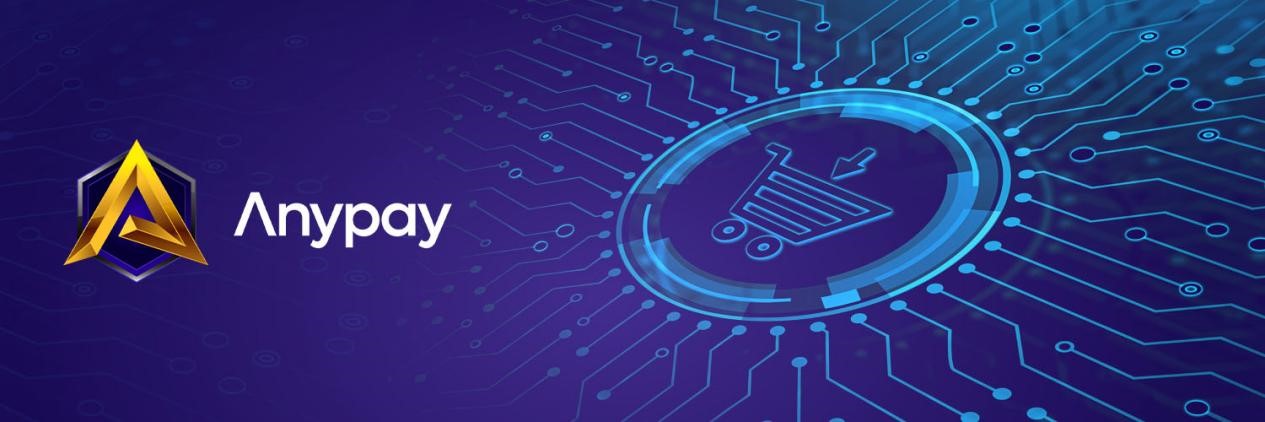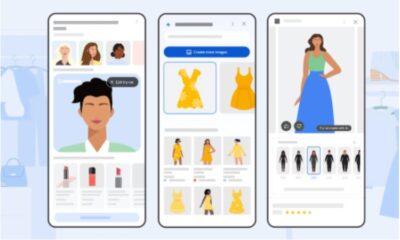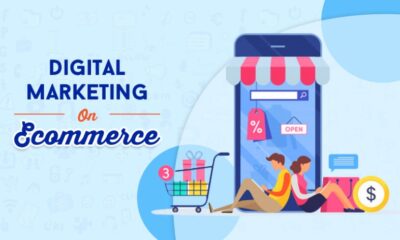Tech
Convenience, the driving force of eCommerce

What is e-commerce?
First, let us define what e-commerce is. E-commerce is the means of buying and selling goods or services, executing money transfers, and transferring data or information across an electronic network, the Internet. This medium allows people to carry out business without the constraint of distance and time.
If you have ever bought anything from an online retailer you have participated in e-commerce. An e-commerce website lets visitors find their goods online, add them to their “basket,” and securely input their payment information to carry out their purchases.
Examples of e-commerce and how they work?
There are three main forms of e-commerce:
– B2B (business-to-business): Websites like Shopify, a subscription-based software that allows anyone to set up an online store and sell their products.
– B2C (business-to-consumer): Websites like Amazon, which sells books, music, movies, electronics, toys, housewares, and many other goods, either directly or as the middleman between other retailers.
– C2C (consumer-to-consumer): Websites like eBay, a website that allows users to list their items for sale, which other users can then bid on in auctions, or even buy at a fixed price.
What does the future look like for e-commerce?
With the unprecedented events of 2020, e-commerce has seen accelerated sales growth around the world, with no signs of easing. According to reports from Forbes, global e-commerce retail sales will reach more than 2,7 trillion dollars in 2021 and are more than capable of reaching 4,2 trillion dollars and onwards by 2025.
It is estimated, that by 2023, online purchases will see a steady rise from 14% to 22%. This demonstrates that there is no question concerning the future growth of e-commerce, which is far from unstable.
Why e-commerce growth is so rapid?
Despite the unpredictable events of 2020, e-commerce was still on steady growth, but the events certainly did boost numbers. Take the United States for example, according to Digital Commerce 360, US consumers spent over $861 billion in 2020 alone, which is an increase of 44% year over year.
But what other factors have caused the rapid growth in online sales?
Mobile Adaptivity, continual growth in web traffic is generated by smartphones, and tablets, driving e-commerce sales. Mobile e-commerce sales are expected to increase, predicted to reach 2.9 trillion in 2020.
Smartphones allow for real-time updates, exclusive deals, and promotional schemes, and most notably the one-touch purchase options. A lot of benefits have contributed to the rise in online sales, we will have a closer look at how convenience is playing a crucial role with regards to one-touch purchase options.
Let us look at another economy that is booming as of late… Subscriptions
Yes subscriptions, according to Zuora (a subscriptions specialist), in their most recent bi-annual subscription economy index report, which includes a vast spectrum of leading subscription businesses, has shown that the subscription economy has grown 6x (more than 435%) over the last few years, which is 8x more growth than traditional businesses.
New and existing companies are incorporating the subscription business model due to the demands. These adaptions to subscriptions are not just for the benefit of the customer though, they also provide a lot of stability and control for the merchant. In a previous article, we explored some of the benefits the Subscription Business Model yields, here are a few:
– More reliable and consistent revenue stream
– Potential to increase customer retention & lifetime cycle
– Seamless customer journey
– Effortless distribution of goods and services
– Improves inventory management
– Eradicate missed or outstanding payments with regular clients
Take Netflix for example, an inexpensive streaming service that is changing the way people consume media. Initially, they were pioneers in this industry but now, a monopoly does exist, as big competitors offering similar services have emerged like Disney, Amazon, and Apple.
The same can be said for the gaming industry, which is now following suit and adopting the same business model as Netflix, moving away from physical media to digital.
According to Statista.com “In 2025, video game subscriptions are projected to maintain a double-digit annual growth rate at 14.3% market revenue increase per year. Gaming subscriptions are one of the fastest-growing gaming segments, outpacing video game purchases and in-game purchases in terms of annual growth rate. In 2021, revenue from video game subscription services like PlayStation Plus, Xbox Game Pass, and Apple Arcade was estimated to reach 7.5 billion U.S. dollars”
What does the future look like for e-commerce?
There is a multitude of trends emerging in the e-commerce economy, each one adding more value and more convenience to the consumer, increasing the likelihood of them returning. Below are some of the top examples of where e-commerce is heading and what kind of technology will enable it to grow.
Ecommerce developments:
– Augmented reality enhances the user experience, a lot of home improvement retailers are beginning to adopt AR visualization mechanics which allow users to envision how products will look in their homes, by using augmented reality. For example, if a bed is the right size for a room.
– In Virtual Reality, users can have the experience of shopping whilst in the comfort of their home. Virtual shops and venues are being developed to allow for a more immersive online retail experience.
– More viable payment options, the demand for cryptocurrencies to be considered legal tender and an accepted means of payment is growing exponentially.
– AI (Artificial Intelligence) and bots are becoming more advanced, being able to answer any query and locate any product the user may be searching for instantly, whilst also suggesting alternatives, like a shop assistant.
– Voice Search Activated Commerce, with more households adopting Amazon, Alexa, and Google Home, users can order anything they want, including repeat weekly shopping orders, simply by asking the devices.
Convenience, the driving force of e-commerce…
Earlier in the article, I alluded to the fact I would investigate convenience playing an influential role in the growth of e-commerce and particular one-touch purchase options.
You see, consumers from this generation, who frequently shop online, with apps and websites are moving beyond one-time purchases, as they want hassle-free access to goods and services they love and for it to be automated and seamless. This applies to a whole array of services such as software distribution, cloud gaming, streaming, and physical goods like cosmetics, clothing, and even pet food.
Therefore, businesses have had to readily adapt to these requirements.
That is where AnyPay comes in and our AnyPayment protocol. Having kept our eye open to both the e-commerce economy and subscription economy. We know the modern-day consumer, the modern-day currencies like crypto, the modern-day requirements for businesses to succeed, and what kind of innovation that requires.
Over the past decade, the growing list of demands from consumers has changed a lot and shaped where e-commerce is heading. One of the biggest demands is available payment options, what currency you can use to pay for goods. With this rising global interest in cryptocurrency and blockchain applications, AnyPay developed the AnyPayment protocol to introduce cryptocurrency into everyday life and everyday purchases, without all the extra steps.
AnyPay was the first to bridge Cryptocurrency to this subscription economy.
Convenience is at the forefront of the AnyPayment protocol, we have created a protocol that brings together, e-commerce, cryptocurrency, and subscriptions. Merchants and customers can make and receive payments in a myriad of ways, completely tailored to their exact requirements.
Most notably, just one of the many features of the AnyPayment protocol is the settlement layer. Merchants can utilize the Settlement currency feature, charging for services in one currency like USD, and having it settled in another currency like Bitcoin. On top of this, a customer does not have to use either USD or BTC, they can pay in whatever currency they prefer and the AnyPayment protocol will then settle the amount in the merchant’s specified currency.
Both merchant and customer can enjoy the flawless integration of AnyPayment using Crypto and the many benefits. With a simple click of a button, a scan of a QR code, or even with a MetaMask Wallet connection, users can easily sign up for their favorite services quickly, without extra steps, and no hidden charges.
To find out more about the AnyPayment protocol and its many benefits, use the link.
-

 Gadget4 weeks ago
Gadget4 weeks agoAfter Grand Success on BLDC Ceiling Fan, Eff4 Is Launching Smart Bulb
-

 Festivals & Events4 weeks ago
Festivals & Events4 weeks agoGoogle Celebrates Cherry Blossom Season with Animated Doodle
-

 Business3 weeks ago
Business3 weeks agoPrakash and Kamal Hinduja: Driving Social and Environmental Change
-
Education3 weeks ago
Fred DuVal: University Leadership as a Critical Resource for Climate Change Research and Life-Saving Solutions
-

 Health3 weeks ago
Health3 weeks agoThe Hinduja Brothers Commitment to Global Health: Empowering Communities Across Borders
-

 Cryptocurrency3 weeks ago
Cryptocurrency3 weeks agoDesigned For The Masses: How Akasha (AK1111) Is Unlocking Crypto For The Next Billion Users
-

 Cryptocurrency3 weeks ago
Cryptocurrency3 weeks agoNexaglobal & Future World Token (FWT): Could This Be the Next Big Crypto Investment of 2025?
-

 Sports4 weeks ago
Sports4 weeks agoWomen’s NCAA Tournament 2025 Sweet 16: Full Schedule, Fixtures, Teams, Bracket, and How to Watch March Madness Basketball Match Live

























